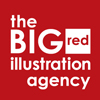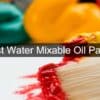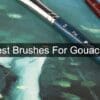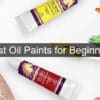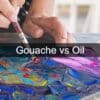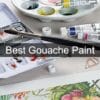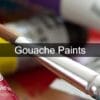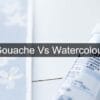Best Paper For Oil Pastels.

Best Paper For Oil Pastels For Students & Professional Artists
What is the best paper when using oil pastels? This is a question that many people ask when they first start out with this medium. There are a number of factors to consider when choosing your paper and in this post, we will take a look at some things to keep in mind before making a purchase. We also have some top recommendations and popular brands available today.
Disclaimer – This website contains affiliate links. If you find the information useful and click on a product link and make a purchase, a small commission will be earned by Big Red Illustration
Oil pastel papers and paper pads
Quality crafted paper and paper pads designed for oil pastels should have enough paper weight to resist tearing, is acid-free for archival purposes, and should be able to easily hold a few layers of the medium. Pastel pads provide the best value rather than individual sheets. Paper designed to be used with oil pastels is of course a must as other papers simply will not give the desired results for your artwork.
Tones of oil pastel paper
An oil pastel paper that has earth tones (i.e. shades of brown or green) is a good way to begin the initial color scheme and get your piece off to a great start. The tone is similar to an initial wash when doing an oil or acrylic painting and highlights the painting.
The same applies when working with oil pastels, the same color theory holds true for landscapes or outdoor pieces to get the perfect color tones for your artwork. It’s important to choose the right tone to work well with the concept you are working on which is perfect for your piece.
Texture
The texture of the paper is a key factor as the oil pastel texture is quite different from that of pencils and watercolors. The best oil pastel paper for texture is rough paper, which allows for a more ‘painterly’ effect. Oil pastels naturally as you’d expect from the name contain oil, which makes them stick to any surface you can imagine. However, using this medium on rougher surfaces and papers will allow your colors to hold better.
Recommended Paper For Oil Pastels
Faber-Castell Black Paper Pad – 25 Sheets of 9″ x 12″ Paper

The top oil pastel paper brands are listed in a quick comparison and recommendation table.
One company at the forefront is the American company Faber-Castell with their Black Paper Pad
The Faber-Castell Black Paper Pad enhances those shades that would normally go unnoticed on regular white paper. The paper’s quality is amazing for archival purposes as the paper is acid-free and hence preserves the quality and the pastels. The weight also accommodates the oil pastels (soft pastels & hard pastels) very well. The only setback is that it has a shallow tooth which is not ideal when working on effects and textures. See more about texture below.
Top oil pastel paper worthy of a mention
Featured oil pastel papers:
Strathmore 400 Series Pastel Pad

Strathmore 400 Series Pastel Pad, Assorted Colors, 9″x12″ Glue Bound, 24 Sheets. A glue bound pad of 24 sheets made from 100% cotton rag paper. The surface is a cold press which provides an even tooth for applying oil pastels. The Strathmore 400 series is a favorite among artists and has been the go-to paper for oil pastels since it was first introduced.
Canson Mi-Teintes Drawing Papers

The Mi-Teintes line is the gold standard when it comes to your oil pastels. The quality of the paper means you can easily work up a few layers with the quality of each surface. With 50 colors available, you can select the perfect tone for your artwork. Available in two size (9” x 12” or 12’ x 16”), you can find one that suits your preference. The paper is sold both as a mi teintes pastel pad (they offer assorted tones, earth tone, and gray tone) and individually.
Arteza 9×12 Inch Black Sketch Pad

30 Sheets (90lb/150gsm), Spiral-Bound, Heavyweight Paper, Art Supplies.
The Arteza 9×12 Inch Black Sketch Pad is a great choice. It features 30 sheets of heavy-duty paper that is perfect for oil pastels as it will not buckle or crease the surface when you apply a light layer. This dark color makes it easier to see your work progress and make any necessary adjustments before proceeding with more layers.
Sennelier Oil Pastel Card Pads
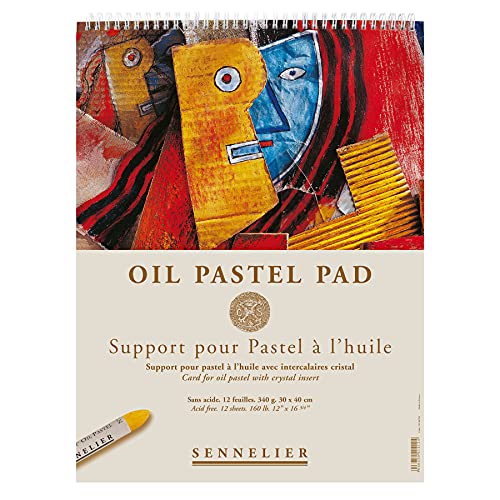
If only the best will do! Sennelier Oil Pastel Card Pads is a perfect substitute to the Canson Mi-Teintes except that it’s more expensive. Each pad comes with 12 bright-white sheets, making it slightly thinner and limited than the others I reviewed. It comes in 4 different sizes to meet the normal requirements of the artist.
The Sennelier oil pastel pad is spiral bound which is good to preserve for future use. The best part about the pad is the glassine paper. Glassine is a glossy and smooth paper sheet that is used by laying it on artwork to prevent pigments from transferring to the immediate sheet while the work is paused.
U.S. Art Supply Pastel Paper Pad – oil pastel papers
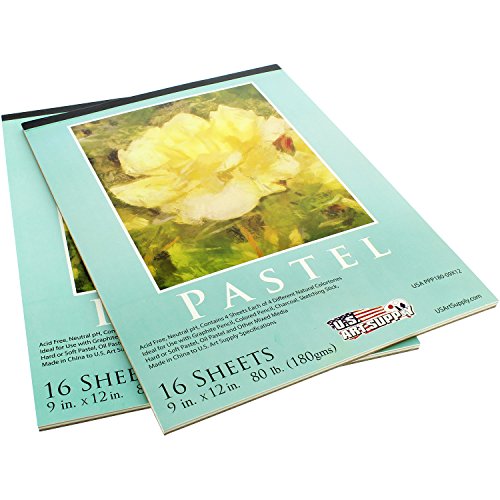
Oil pastel paper pad: This paper is better suited for beginners as it is cheap and works great with oil pastels. It has enough tooth for pastels to stick on it but isn’t so good for sketching because of its smooth surface.
This paper weighs 80 lb (180gsm) which is good enough to resist tearing. These papers for oil pastels come in four brilliant colors White, Cream, a light tannish, and a light grey color.
UArt Premium Sanded Pastel Papers
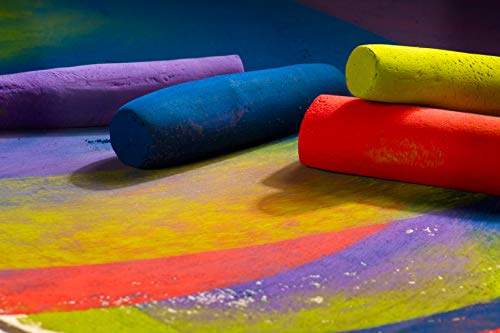
UART Premium Sanded Pastel Paper comes in 7 different grades of coarseness. This is one of the more expensive options available for oil pastel artists, it’s also one of best. The paper is heavyweight, meaning you can easily underpaint on this paper without having to worry about damaging the paper. The papers come only in two colors: dark and natural.
The dark tone sanded paper will be perfect for bright oil pastels with it as a perfect background. The natural tone will undoubtedly go with a great range of art concepts and ideas. The tooth is deep enough to let the artist work smoothly and have control over the effects.
MUNGYO Professional Pastel Paper Pad A4 Size
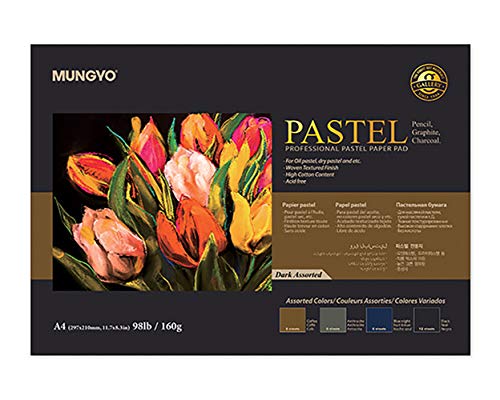
Available for Oil Pastel, Dry Pastel and comes with 30 Sheets, this pad will last a long time and is easy to store. This option is perfect for those artists who are looking for large amounts of paper, but not willing to break the bank. It has a woven textured finish and is acid-free. I would even suggest that it rivals Canson for both chalk and oil pastels. A quality oil pastel paper for the price
Hahnemuhle bugra pastel paper
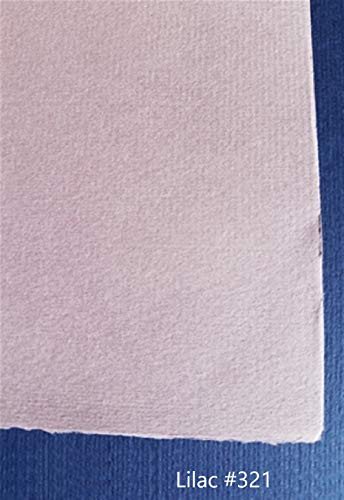
A heavy hitter in the arena, this paper is perfect for all of those professionals looking to produce a final product that will stand the test of time. Available in a huge range of colors, it is a great option for those looking to explore different hues and values. It has a very fine, textured surface that creates vibrant colors with the oil pastels.
Other oil pastel papers
Other papers: There are of course many other brands of oil pastel paper out there, each with its own pros and cons. Different price points and different grades and textures all contribute to the best paper for oil pastels. Oil pastels will work on just about any surface, but the best paper for oil pastels will always give the finest and prettiest results.
The thicker, heavier-weight papers are mostly made with a cotton rag content that has been coated with polyurethane; these tend to have the most tooth or roughness of any type of paper. This makes them great for use in blending colors together.
What To Look For When Buying Oil Pastel Paper
– Heavyweight paper: the paper needs to be heavy enough for oil pastels.
– surface: as I mentioned before, some artists like using different surfaces and textures in their work. The best oil pastel papers will give you a variety of options with this factor too.
– price point: there are plenty of great brands that are not overly expensive.
Oil pastels – FAQ’s
Can you use normal paper for oil pastels?
Using a thin grade of “normal” paper for oil pastels is possible if you are careful and precise. However, I highly recommend that you use a thicker grade paper like Bristol or Rives BFK for oil pastels because it will be more durable and will hold the oil pastels far better.
Is dual surface paper available?
Some pads come with a combination of heavy and light textures on each side of the paper surface. This is useful for those who like to use a variety of textures in their work. The textured paper adds to the overall finish of a piece.
What can I use to blend oil pastels?
The best way to blend oil pastels is to use a dry brush. You can also use your fingers if you want, but I don’t recommend it because oil pastels are so oily and not easy to wash off of skin or clothing.
Here are the best blending tools:
Pastel shapers
Pastel shapers are tools that you can use to blend oil pastels by applying pressure from the side. It is a good option for blending and creating edges when you are using a transparent color over an opaque one.
Tortillons or stumps
Tortillions or stumps are a great choice for blending oil pastels. They are made of paper or cloth and come in various shapes to accommodate a variety of needs.
Wet rag/chamois
If you really want the most natural appearance, I recommend using a wet rag or chamois instead of other methods.
A kneaded rubber
A kneaded rubber can be used to create a similar effect as you would get with an oil pastel tortillon, but it won’t leave any marks on your blending surface.
Pastel brushes
Another great way to blend oil pastels on a pastel pad is using pastel brushes. The effect they create is similar to that of a tortillon or stump.
Is vellum paper good for oil pastels?
Using vellum paper for oil pastels is not a great idea. It’s not as durable and will buckle easily so I don’t recommend that you use vellum if the purpose is to frame or display them because they won’t be as strong. Vellum paper is ideal for graphite, charcoal, airbrush, pastel, crayon, colored pencils, and pen and ink but not oil pastels.
Can you use oil pastels on cardstock?
Oil pastels can be used on cardstock, but I would recommend that you use a really thin layer of the oil pastel because it’s not as durable. Oil pastels work far better on the above-mentioned oil pastel paper.
Can I use Oil Pastels on watercolor paper?
Oil pastels can be used on watercolor paper, but the oil pastel drawing won’t really stay in place and will spread. If you want to use them for this purpose then I would recommend that you put a thin layer of gesso first before applying the oil pastels so it’ll have some protection from spreading all over your work space
What is Gesso?
Gesso is a type of primer for canvas usually available in your local art store or in hobby and craft stores in the art supplies section. It’s mainly used on watercolor paintings and mixed media artworks to help the paint stick better – this can be used to help oil pastel stick if using watercolor paper.
What are some good brands of oil pastel paper?
Some good brands include Fabriano, Royal Langnickel, John Pike & Sons Parchment Paper as well as the brand already mentioned above.
What other mediums can be used on oil pastel paper?
Some other mediums that are compatible with oil pastel paper include watercolor, acrylic paint and gouache.
What is the best way to clean up after using oil pastels?
You can use a damp cloth or tissue, but it’s always better to have some baby wipes on hand just in case you need them.
What is the best way for students and professional artists to store paper?
The best place to keep your oil pastel paper would be in a portfolio case, which will allow you quick access at all times so that it’s always ready when you need it!
Oil Stick vs Oil Pastel?
Oils sticks are just like oil pastels except they are a little less messy. The main difference between an oil stick and an oil pastel is the consistency of the paint. The oils in an oil stick will be more liquid than those found in oil pastels.
Oil pastel art – What is sanded pastel paper?
Sanded pastel paper is a type of drawing or painting paper that has been sanded down. Sanded paper makes it easier for the oil pastels to bind with the surface, and will provide an even finish when dry! Why not give the sanded paper a try to see the results for yourself. Sanded papers are available from top brand UART.
See UArt Premium Sanded Pastel Paper For Details
Soft pastels vs Hard Pastels – what’s the difference?
When it comes to the finish, hard pastels will leave a very rough finish, while a soft pastel has a much smoother effect. Depending on the type of artwork you’re doing will depend on which type of pastel you want to use. Best to experiment on cheaper pastel paper and paper surfaces to see which paper works best for you.
What are the best oil pastels to use on the recommended pastel papers?
There are so many great choices of oil pastel and really needs its own post to go fully into details about the pros and cons of each. The top brands of oil pastel include Faber-Castell, Sennelier, Staedtler, and Pentel to name a few. If you use top-quality oil pastels on the best oil pastel paper, the results are fantastic.
Pastel pad & paper – what does “acid-free” mean?
Acid free paper as you would expect is a type of paper that’s created to not have any acid in it (the name gives it away!). But what does that mean for you as an artist? This is important to know for the longevity of your oil pastels and paintings. The acid in some cheaper paper surfaces is not good for your pastels and will cause the paper to yellow over time, spoiling your hard efforts as a result. For professional artists, it’s best to experiment on cheaper pastel paper before committing to high-quality oil pastel papers.
Top Tips for an oil pastel artist
– Always use the most suitable paper.
– Many artists use a fixative to keep your colors from smearing when you go over them with another layer of color.
– Many oil pastel artists also mix pieces of dry and wet pigment together, this will allow you to create any desired shade without having to switch out mediums!
- Books – there are plenty of books on oil pastels and provide tips and information about materials, along with step-by-step tutorials so you can hone your skills. You’ll no doubt improve your oil pastel paintings in a short space of time by learning from the best.
Take a look at some recommended reading here.
- Online tutorials are another great way of learning more. From your first painting in oil pastels through to more advanced techniques, various online guides by many artists will take you through the process of creating your very own masterpiece!
Oil pastel techniques – a quick overview
Although this post is about the best oil pastel paper to use, it wouldn’t be complete without mentioning a few oil pastel techniques used in the art world for you to take advantage of. So when you are equipped and ready to go, here’s a few techniques to mention:
– One of the most popular techniques is to lay down a solid base color and then dab off sections with your finger. This will create a textured effect on your pastel pad that mimics a natural form, like foliage or skin!
– Another technique you can use is called “bouncing”. Bouncing involves using a paper towel to pick up the oil pastel and then quickly rubbing it onto the canvas.
– You can also use an eraser or sponge to smudge your work for some really interesting effects!
A great experimental technique to try with oil pastels is to use toothpaste or baby powder. You first need to take your watercolor brush, dip it in the paste and then rub off some of the excess on the edge of your palette before you start painting with oil pastel overtop. You’ll be left with a marbleized effect that looks really cool when you use it with other colors.
Another way to do this is by using a sponge or eraser and rubbing the pastels together in your palette before you start painting. You can also mix oil frosting, watercolor paint, ink and even acrylic to create a lot of different designs. Sanded papers will give more texture too so keep this in mind.
Conclusion
So it’s time to put away your colored pencils, oil paints, and acrylic paints, crack open your oil pastels and start creating! Grab your preferred pad or paper now you know the brands to choose from to achieve your desired effects.
Check out the best deals online …
Affiliate Disclosure
In compliance with the FTC guidelines, please assume the following about all links, posts, photos and other material on this website:
Any/all of the links on this website are affiliate links of which The Big Red Illustration Agency receives a small commission from sales of certain items, but the price is the same for you.
www.bigredillustrationagency.com is a participant in the Amazon Services LLC Associates Program, an affiliate advertising program designed to provide a means for sites to earn advertising fees by advertising and linking to Amazon.com & Amazon.co.uk. Pages on this site may include links to Amazon and its affiliate sites on which the owner of this website will make a referral commission.
Cookie preferences: cookie preferences
Adam has made a name for himself in the illustration industry and is a passionate blogger and writer on the subject of art, illustration and graphic design.
His artwork has been featured in countless publications and used for very well-known media projects. As a professional illustrator for over 20 years, Adam's wealth of knowledge and experience enables him to consult and advise artists and illustrators all over the world.

